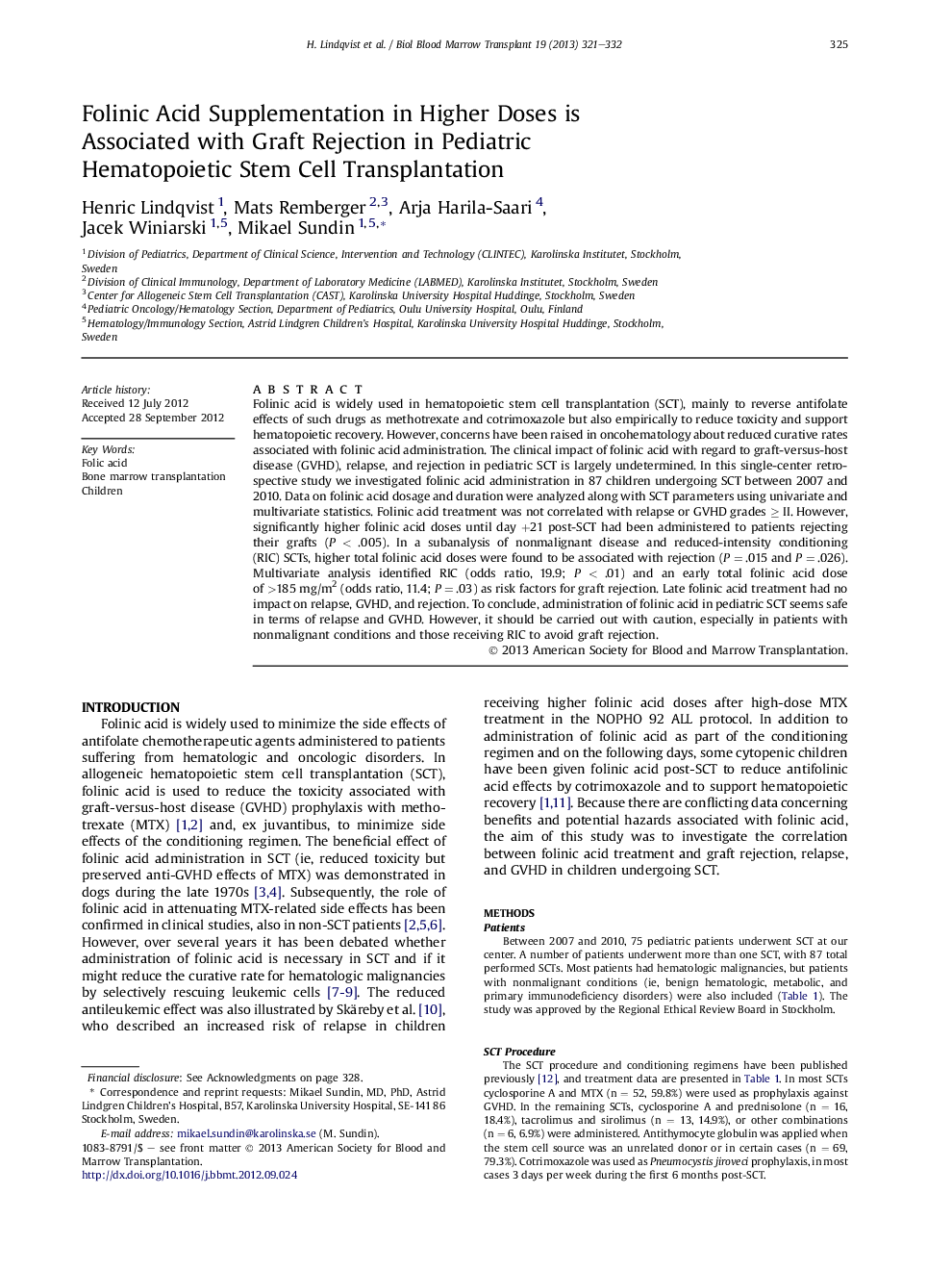| کد مقاله | کد نشریه | سال انتشار | مقاله انگلیسی | نسخه تمام متن |
|---|---|---|---|---|
| 2103142 | 1546296 | 2013 | 4 صفحه PDF | دانلود رایگان |

Folinic acid is widely used in hematopoietic stem cell transplantation (SCT), mainly to reverse antifolate effects of such drugs as methotrexate and cotrimoxazole but also empirically to reduce toxicity and support hematopoietic recovery. However, concerns have been raised in oncohematology about reduced curative rates associated with folinic acid administration. The clinical impact of folinic acid with regard to graft-versus-host disease (GVHD), relapse, and rejection in pediatric SCT is largely undetermined. In this single-center retrospective study we investigated folinic acid administration in 87 children undergoing SCT between 2007 and 2010. Data on folinic acid dosage and duration were analyzed along with SCT parameters using univariate and multivariate statistics. Folinic acid treatment was not correlated with relapse or GVHD grades ≥ II. However, significantly higher folinic acid doses until day +21 post-SCT had been administered to patients rejecting their grafts (P < .005). In a subanalysis of nonmalignant disease and reduced-intensity conditioning (RIC) SCTs, higher total folinic acid doses were found to be associated with rejection (P = .015 and P = .026). Multivariate analysis identified RIC (odds ratio, 19.9; P < .01) and an early total folinic acid dose of >185 mg/m2 (odds ratio, 11.4; P = .03) as risk factors for graft rejection. Late folinic acid treatment had no impact on relapse, GVHD, and rejection. To conclude, administration of folinic acid in pediatric SCT seems safe in terms of relapse and GVHD. However, it should be carried out with caution, especially in patients with nonmalignant conditions and those receiving RIC to avoid graft rejection.
Journal: - Volume 19, Issue 2, February 2013, Pages 325–328